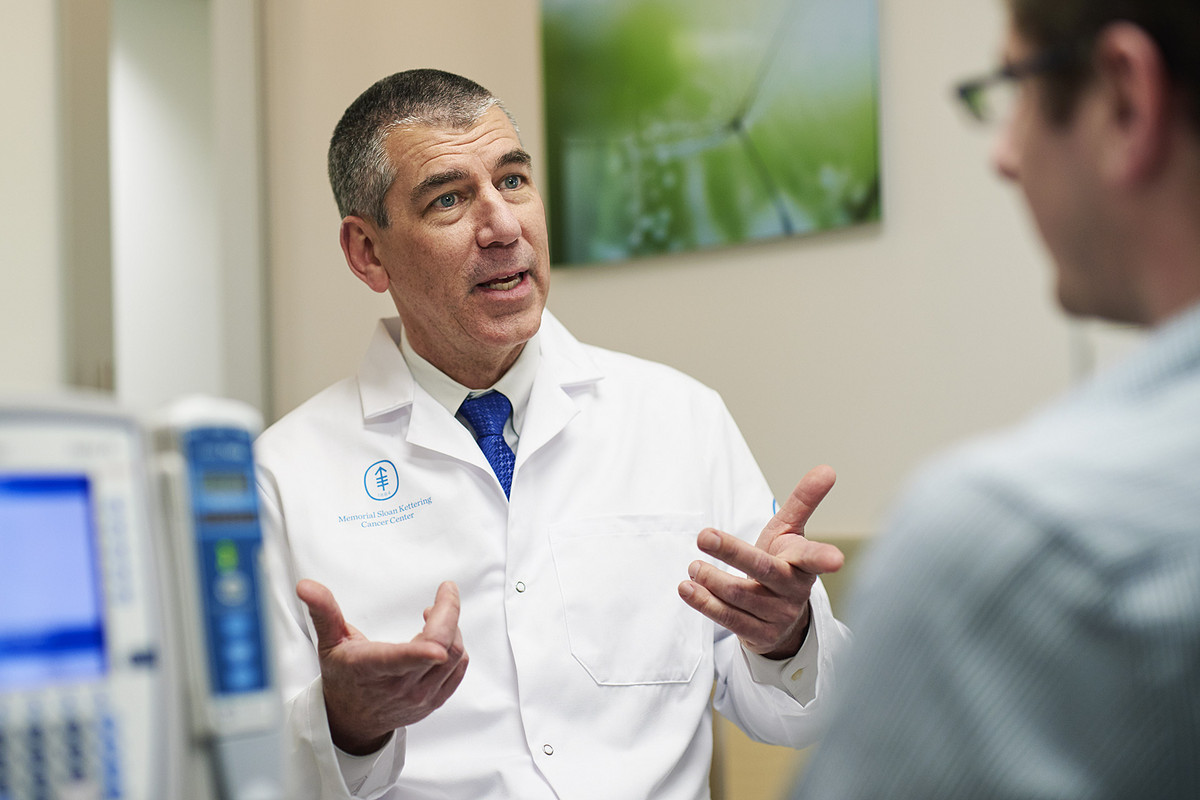
Nurse Dara Marie Lugay checks in with a patient recovering from surgery at MSK.
Surgery remains the most direct approach for treating cancer. For some people, surgery is all that’s needed to cure the disease. Others may need additional treatment with radiation, chemotherapy, or other therapies before, during, or after the operation.
On May 19, a panel of MSK experts addressed your most pressing concerns and answered your questions about your upcoming treatment or appointment.
In cancer surgery, the stakes are especially high. Having the right procedure up front means that your cancer is less likely to come back. It also reduces your risk for serious complications that can impair your health and normal bodily functions.

MSK surgeons like Tracy-Ann Moo are committed to finding new ways to improve outcomes for our patients.
What advantages can Memorial Sloan Kettering surgeons offer you or your loved one? First and foremost, our doctors are super-specialized experts not only in surgical techniques to remove cancer but also in the disease itself. Their sole focus is on cancer, and they care deeply about finding better ways to treat and cure it. In fact, surgeons from all over the world come to MSK to learn new techniques.
Even though other surgeons may be equally adept at performing an operation, surgeons at MSK — working closely with our pathologists, medical oncologists, and many other cancer experts — have the depth of knowledge to perform it at the right time, in the right way, and in combination with the right additional therapies. They’re committed to helping you understand all your options, including when it’s feasible to postpone surgery and closely monitor your cancer instead, using an approach called active surveillance.
Active surveillance, sometimes called watchful waiting, has been made possible through advances in cancer science that are allowing doctors to understand when a cancer will progress slowly and is not a threat to your health. This approach may allow you to delay treatment — and avoid its potential risks and side effects — until symptoms appear or there’s a change in the aggressiveness of your disease. It’s a proven method our surgeons pioneered very successfully here with prostate cancer and that we’re increasingly using for thyroid, kidney, and other cancers.

Surgeon James Eastham counsels men with prostate cancer on their various treatment options, including active surveillance.
In addition to saving lives by curing cancers, our surgeons work hard to find ways to help patients fully recover normal function after treatment. To give just one example, our gynecologic surgeons helped develop a new surgical procedure that preserves fertility in patients with early-stage cervical cancer. We now have one of the most active programs in the United States using this technique, allowing many women to still have children who would have lost this ability in the past.
Our Approach to Surgery
Our goal with surgery is to remove as much of the cancer as we can — all of it, if possible. We’re experienced in effectively removing common tumors as well as very complicated growths in hard-to-reach or delicate parts of the body. Our skilled surgeons work as a team with our other highly trained experts, such as anesthesiologists and nurses, who can make a crucial difference in how well you do during and after surgery.
If you’re a candidate for surgery, we’ll recommend the approach that gives you not only the best chance for survival but also the best quality of life possible. A few of the factors we take into consideration include the following:
- the type of cancer you have (for example, solid tumors often can be surgically removed, while blood cancers can’t)
- where in your body the cancer is located and how we might best reach it to remove it
- the extent of the cancer, and whether it has spread (metastasized) to nearby tissue
- how quickly the cancer is growing
- other health conditions that may affect how you tolerate and recover from surgery
Minimal-Access Surgery
For some patients, we may recommend a minimal-access operation (also called a minimally invasive operation), common types of which include robotic surgery and laparoscopic surgery. During a minimal-access procedure, your surgeon performs the same operation he or she would have otherwise done with the traditional, open approach but using special instruments and scopes that require several smaller incisions instead of one larger one.
Our surgeons are highly skilled in these techniques, as well as in knowing when such an approach might be right for you. The key consideration on our minds is always which technique is best for curing your cancer and giving you a normal life afterward. Although a minimally invasive approach can be a good option for many people, it’s not right for everyone.
In some cases, your doctor may recommend radiation, chemotherapy, or other treatments in addition to surgery. These therapies can help shrink the cancer before surgery so it’s easier to remove, or after surgery to kill any stray cancer cells. Chemotherapy or radiation during your operation may also be an option.
- Our surgeons are studying a new technique called hyperthermic (heated) intraperitoneal chemotherapy, or HIPEC, for some people with colorectal cancer and certain gynecologic cancers. With HIPEC, high concentrations of heated chemotherapy are delivered directly into the lining of the abdominal area immediately after the tumor has been removed in order to treat any remaining cancer cells. HIPEC delivers a much higher concentration of chemotherapy — which can be more effective at killing cancer cells — while lowering the toxicity and side effects associated with conventional chemotherapy.
- Intraoperative radiation therapy involves the delivery of high doses of radiation during surgery to remove a tumor. One approach uses a device called a linear accelerator to deliver a concentrated beam of radiation where cancer cells could still be lurking. In another technique called brachytherapy, tiny radioactive seeds are implanted in or near the tumor.
Sometimes, our surgeons may incorporate certain imaging procedures, such as MRI, PET, or CT, into an operation. The benefits vary according to the type of cancer and procedure being performed, but generally speaking, intraoperative imaging gives us the opportunity to better visualize tumors during surgery so that we can more effectively remove them. We’re also exploring new molecular imaging methods that light up cancer cells during an operation so we can see them clearly and ensure we remove them all.
Other Reasons for Surgery
Surgery may also be used to diagnose cancer, or to relieve symptoms and side effects from the disease or its treatment. Here are some other reasons you might have surgery as part of cancer treatment.
Diagnosis
Surgery may be used to diagnose cancer (through a biopsy in which some or all of the suspicious tissue is removed) or to determine the stage or extent of your disease (which includes removing lymph nodes to see if the cancer has spread to them). Your doctor uses this information, together with imaging and blood tests, to help decide which kind of treatment is best for you and to predict your prognosis (how well you’ll recover from your illness).
Prevention
Some operations are performed to reduce the risk of developing cancer. For example, doctors often recommend the removal of precancerous polyps in the colon to prevent colorectal cancer. In other instances, women who have an increased chance of developing breast or ovarian cancer because of a strong family history or certain inherited genetic mutations may opt to have surgery to remove their breasts and/or ovaries to lower their risk.
Reconstruction
Plastic and reconstructive surgery may help restore your body’s cosmetic appearance or physical function. For example, women who have a mastectomy — a procedure to remove an entire breast to treat or prevent breast cancer — may choose to have reconstructive surgery to rebuild the shape of the removed breast.
Plastic or reconstructive surgery may also be done to replace normal tissue and nerves removed during treatment for head and neck cancer; to repair areas where skin and underlying tissue have been removed to treat skin cancer; or to reconstruct organs, such as the bladder or the rectum, that have been removed to treat cancer in those areas. Reconstructive surgery may also complement limb-sparing surgery after large tumors have been removed.
Palliative Care
Palliative surgery is used to alleviate side effects caused by a tumor and can help improve quality of life for people with advanced cancer or widespread disease. For example, surgery may be used to help relieve pain or stop internal bleeding. In addition, our surgeons are now transplanting lymph nodes from one part of the body to another to prevent or reduce lymphedema, an uncomfortable and painful swelling in the arms or legs that can occur after treatment for certain cancers.




